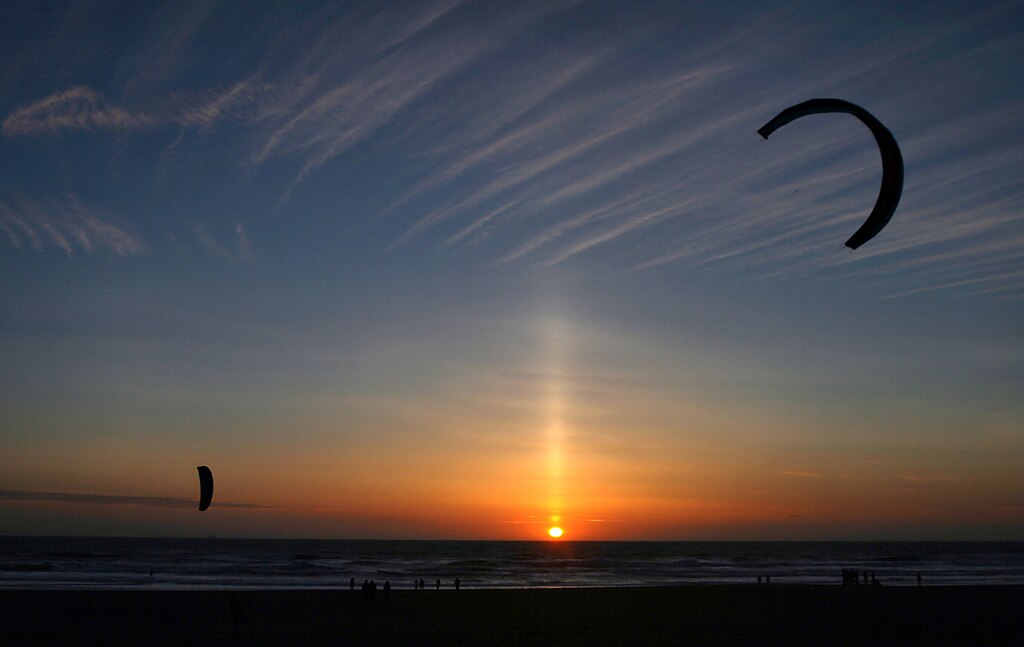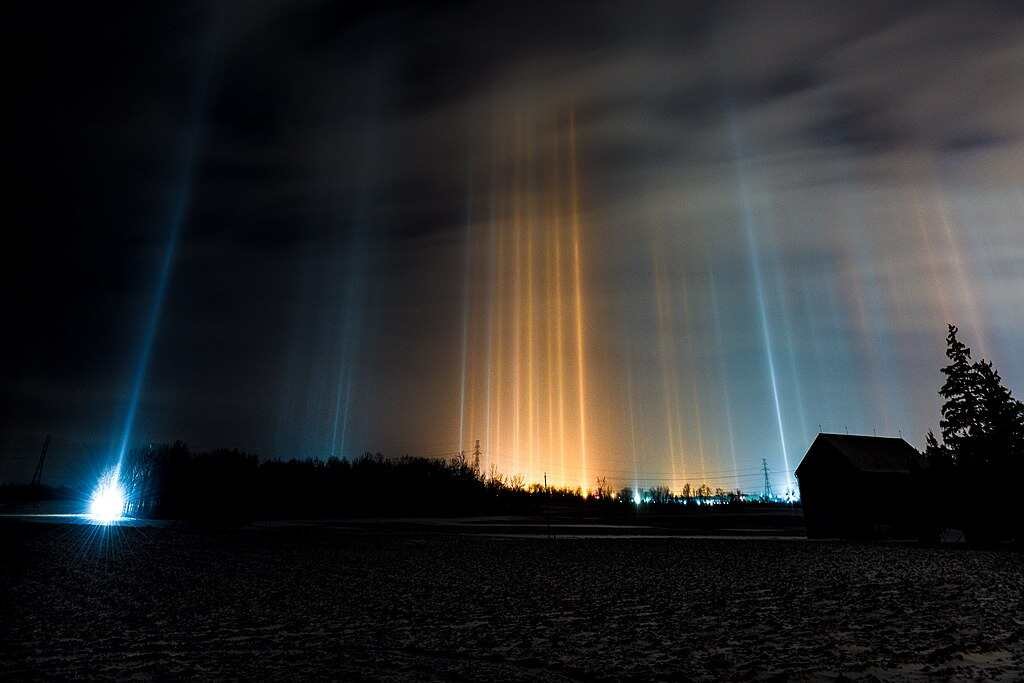Captivating Light Pillars: A Glimpse into a Stunning Atmospheric Display
Light pillars are like magical lines of light in the sky. They look like they’re going up and down from a light. This happens because of tiny ice pieces high in the air or certain types of clouds. When this happens because of the Sun, especially when it’s going down, we call it a sun pillar.
The phenomenon of light columns, although particularly impressive, has a simple explanation:
It is the reflection of light (either natural or artificial) from the rising or setting sun on ice crystals in the atmosphere which is at the origin, whether natural or artificial.
But it can also happen because of the Moon or things on Earth, like streetlights or volcanoes. It’s like nature’s own light show!

Sun pillar in San Francisco, California. Brocken Inaglory, CC BY-SA 3.0, via Wikimedia Commons
Light pillars come in two types:
- Upper pillars: When the Sun or the Moon is low, the light bounces down from the crystals.
- Lower pillars: When the crystals are between you and the Sun, the light bounces up.
How Light Pillars Form?
These light pillars are part of a special group called halos, as they happen when light interacts with ice crystals. These crystals are usually flat and have six sides, like a hexagon. As they fall from the sky, they tend to lie almost flat. Picture them like tiny mirrors, reflecting any light source that’s right below them (imagine looking down on them from above).
Because these crystals are at different heights, the reflection appears stretched out, forming a column. When the crystals are shaped like columns themselves, they can also create optical atmospheric. In super cold weather, these ice crystals can hang close to the ground, and then we call them “diamond dust”.

Light columns in Laramie, Wyoming caused by street lights or automobiles. Christoph Geisler, CC BY-SA 3.0, via Wikimedia Commons
One thing to remember is that a light pillar isn’t physically above or below the light source. It looks like a straight line because of how the ice crystals work together to reflect light. Only the crystals that are perfectly lined up in a vertical line send light rays straight to the person watching (just like in the drawing). This is kind of like when you see a light reflected on water. The ripples in the water send the light in many directions, and the ones that go straight to you form a bright line pointing back to the light.

Scheme of formation of pillars of light (a picture showing how light pillars are made). V1adis1av, CC BY-SA 4.0, via Wikimedia Commons
So, next time you see a light pillar, you’ll know it’s a special dance of light and ice crystals high up in the sky!
Sources: AccuWeather, Atmospheric Optics
Photo credit (main picture): Ray Majoran, CC BY-SA 4.0, via Wikimedia Commons
Photo description: Light pillars in London, Ontario, Canada



